#Cambridge Editor
Text

Link: 1, 2, 3 ... [expand] Alt Text: A black and white image of a young person, seemingly a young woman, with light skin, large dark eyes, and long dark hair in a light blouse with embroidered detail. The pages the information is taken from list them as an active editor at Eikon, Arcadia, and The Cambridge Journal of Law, Politics, and Art, international academic, educational, and arts and cultural publications based out of, respectively, Vienna, Austria, Geneva, Switzerland, and Cambridge, United Kingdom. They are listed under the name of Aleksandra Violana, and as based out of Cambridge, United Kingdom. Their previous experience also lists editorial positions based out of Sheffield, United Kingdom, Heidelberg, Germany, and where they were previously based out of, Utrecht, Netherlands.
#Eikon#Arcadia#The Cambridge Journal of Law Politics and Art#Academic#Educational#Arts#Cultural#Arts and Cultural#Publication#Press#Editor#Cambridge Editor#Cambridge Editors#Cambridge England#Cambridge United Kingdom#Utrecht Editor#Utrecht Editors#Utrecht Netherlands#Aleksandra Violana#Aleksandra#Violana#Cambridge PhD#Cambridge MPhil#Utrecht BA Hons#Find Cambridge Editors#Find Utrecht Editors
1 note
·
View note
Text
How Long Does it take to Copy Edit Services 1000 Words?

It typically takes me around 2 hours to copy-edit services 1,000 words. This includes time spent reviewing the document for overall clarity, fixing any grammar mistakes, ensuring that all the pieces are correctly placed, and making sure the tone and voice are consistent throughout.
Of course, this time could vary depending on the level of editing required (light, heavy, or substantive), the complexity of the document, and my current workload.
But in general, 2 hours is a good estimate for how long it will take me to copy-edit 1,000 words.
Copy edit services can be beneficial in making your content look and sound its best. However, many people are unsure of how long it will take to have their content copy-edited. This will give you an overview of how long it typically takes to copy-edit 1000 words.
On average, it takes around two hours to copy edit services 1000 words. However, this time can vary depending on the complexity of the text and the level of editing that is required.
If you need a more detailed or intensive edit, it will likely take longer than two hours. On the other hand, if your text only needs a light edit, it could be done in less time.
In any case, it is important to allow enough time for the copy edit services to do a thorough and quality job.
A common question many people have is how long it takes to copy-edit 1000 words. The answer may surprise you. It typically takes about two hours to copy-edit 1000 words, but this can vary depending on the editing needed.
Copy editing is the process of reviewing and editing written content for style, accuracy, and clarity. When you hire professional copy edit services they will work to make your content clear and concise, while ensuring that it meets all the stylistic requirements of your target audience.
How much do an academic editor’s services cost?
When you’re writing a thesis, paper, or dissertation, the last thing you want to worry about is editing. But if you want to ensure that your work is polished and ready for submission, hiring an academic editors services may be the best move you make.
Of course, the final cost also depends on the length and complexity of your document. A shorter paper with simple grammar and syntax errors may only require a quick proofread, which will be less expensive than a more comprehensive edit.
On the other hand, if you’re writing a doctoral dissertation, it may take more than one round of editing to get your work ready for submission.
You may be wondering where you can find a text editor.
There are a number of companies that offer text academic editors services. Before you decide on a copy editor, make sure you know what you are looking for.
When you choose a copy editor, you should know some of the factors that influence your choice in the first place.
How much should I charge for line editors services?
Line editing is the process of reviewing a text for grammar, punctuation, style, and consistency. It does not involve making major changes to the content of the text.
When it comes to charging for line editors services, there are a few things to consider. First, how much time will it take to review the text? Second, what is the editor’s experience level? And finally, what is the going rate for similar services?
In general, editors should charge by the hour. For a text that will take 1 hour to review, the editor should charge $60-$75. For a text that will take 2 hours to review, the editor should charge $120-$150. And so on.
line editing services can be expensive, but they are worth the investment. In order to make sure you are getting the most for your money, it is important to understand what to look for in a good line editor services.
What to Look for in a Line Editor
When looking for a line editor services, you want to make sure you find someone who is qualified and experienced. The best way to do this is to ask them questions about their experience and what they will be doing for you.
This is a difficult question to answer, as it depends on a number of factors, such as the length and complexity of the manuscript, the number of revisions required, and the level of editing required.
I will attempt to provide a guideline for how much you can expect to pay for line editing services. Keep in mind that these prices are just a guideline and that each editor may charge different rates.
How Much Does Line Editing Cost?
The cost of line editors services varies depending on the length and complexity of the manuscript, the number of revisions required, and the level of editing required. As a general rule, expect to pay between $0.015 and $0.025 per word for line editing services.
#copy edit services#academic editors services#line editors services#professional editors services#academic editing services#academic copy editor services#professional academic editing services#cambridge editors#cambridge university press editors#cambridge university press editorial assistant#cambridge university press editing services#harte weiner#cambridge editing#academic copy editor#cambridge editor
0 notes
Text
17/12/23 this masterlist has been completely, vetted, revamped and reformatted with free access to all reading and viewing material. It will be updated and edited periodically so please try and reblog the original post if you're able.
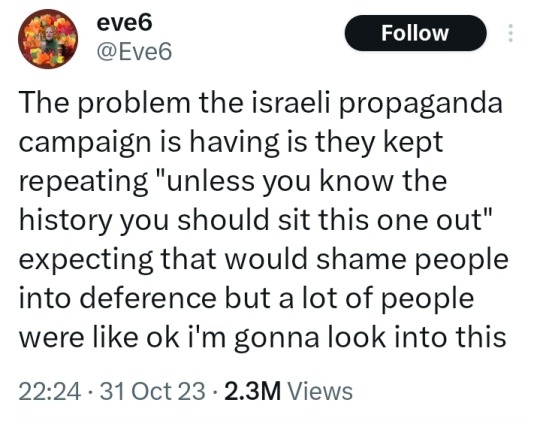
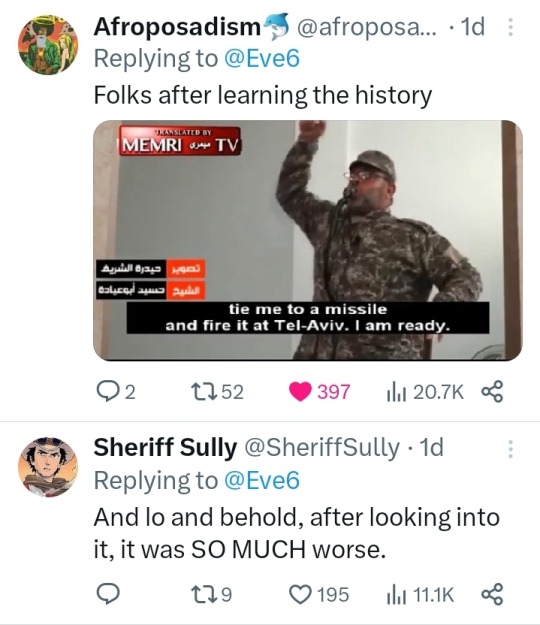

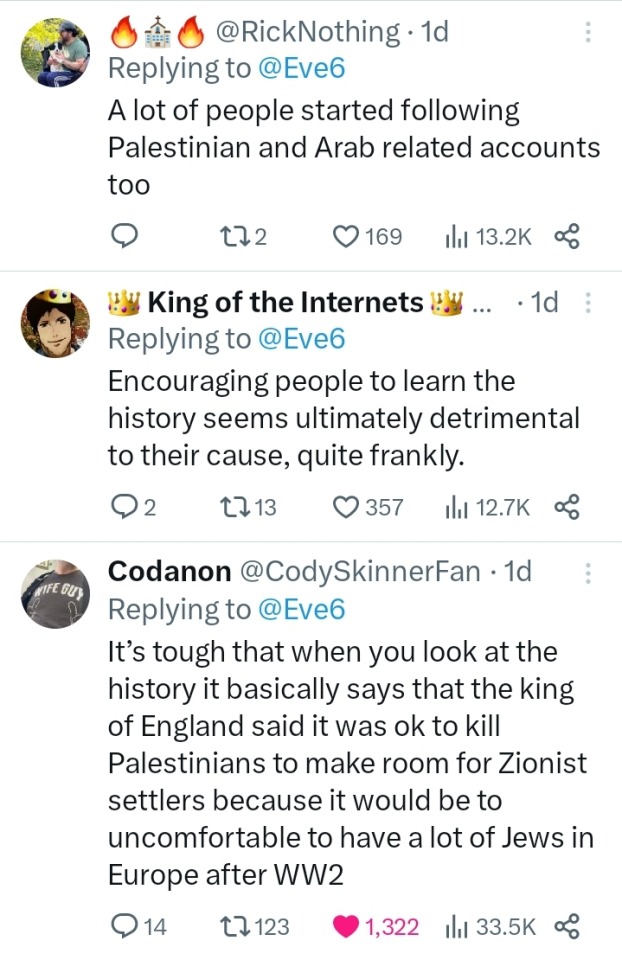
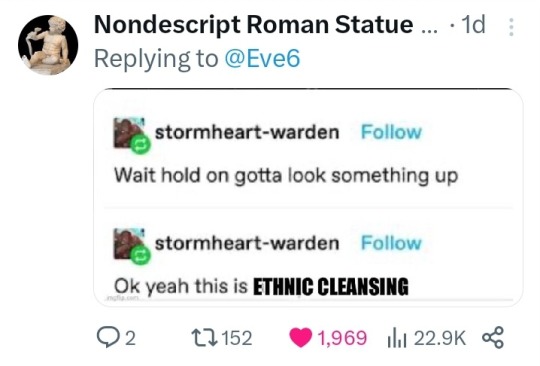
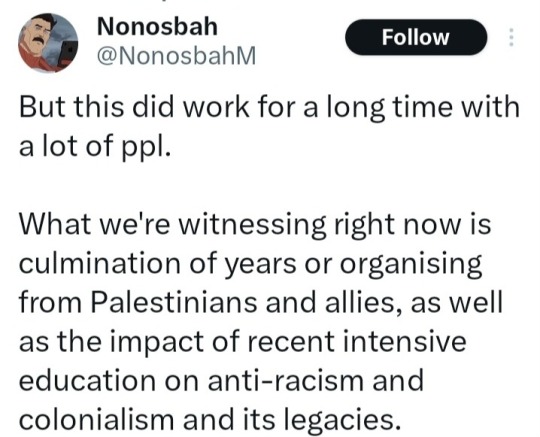
The Big Damn List Of Stuff They Said You Didn't Know
(Yes, it's a lot. Just choose your preferred medium and then pick one.)
Podcasts
Backgrounders and Quick Facts
Interactive Maps
Teach-Out Resources
Reading Material (free)
Films and Documentaries (free)
Non-Governmental Organizations
Social Media
How You Can Help
Podcasts
Cocktails & Capitalism: The Story of Palestine Part 1, Part 3
It Could Happen Here: The Cheapest Land is Bought with Blood, Part 2, The Balfour Declaration
Citations Needed: Media narratives and consent manufacturing around Israel-Palestine and the Gaza Siege
The Deprogram: Free Palestine, ft. decolonizatepalestine.com.
Backgrounders and Quick Facts
The Palestine Academy: Palestine 101
Institute for Middle East Understanding: Explainers and Quick Facts
Interactive Maps
Visualizing Palestine
Teach-Out Resources
1) Cambridge UCU and Pal Society
Palestine 101
Intro to Palestine Film + Art + Literature
Resources for Organising and Facilitating)
2) The Jadaliya YouTube Channel of the Arab Studies Institute
Gaza in Context Teach-in series
War on Palestine podcast
Updates and Discussions of news with co-editors Noura Erakat and Mouin Rabbani.
3) The Palestine Directory
History (virtual tours, digital archives, The Palestine Oral History Project, Documenting Palestine, Queering Palestine)
Cultural History (Palestine Open Maps, Overdue Books Zine, Palestine Poster Project)
Contemporary Voices in the Arts
Get Involved: NGOs and campaigns to help and support.
3) PalQuest Interactive Encyclopedia of the Palestine Question.
4) The Palestine Remix by Al Jazeera
Books and Articles
Free reading material
My Gdrive of Palestine/Decolonization Literature (nearly all the books recommended below + books from other recommended lists)
Five free eBooks by Verso
Three Free eBooks on Palestine by Haymarket
LGBT Activist Scott Long's Google Drive of Palestine Freedom Struggle Resources
Recommended Reading List
Academic Books
Edward Said (1979) The Question of Palestine, Random House
Ilan Pappé (2002)(ed) The Israel/Palestine Question, Routledge
Ilan Pappé (2006) The Ethnic Cleansing of Palestine, OneWorld Publications
Ilan Pappé (2011) The Forgotten Palestinians: A History of the Palestinians in Israel, Yale University Press
Ilan Pappé (2015) The Idea of Israel: A History of Power and Knowledge, Verso Books
Ilan Pappé (2017) The Biggest Prison On Earth: A History Of The Occupied Territories, OneWorld Publications
Ilan Pappé (2022) A History of Modern Palestine, Cambridge University Press
Rosemary Sayigh (2007) The Palestinians: From Peasants to Revolutionaries, Bloomsbury
Andrew Ross (2019) Stone Men: the Palestinians who Built Israel, Verso Books
Rashid Khalidi (2020) The Hundred Years’ War on Palestine: A History of Settler Colonialism and Resistance 1917–2017
Ariella Azoulay (2011) From Palestine to Israel: A Photographic Record of Destruction and State Formation, 1947-1950, Pluto Press
Ariella Azoulay and Adi Ophir (2012) The One-State Condition: Occupation and Democracy in Israel/Palestine, Stanford University Press.
Jeff Halper (2010) An Israeli in Palestine: Resisting Dispossession, Redeeming Israel, Pluto Press
Jeff Halper (2015) War Against the People: Israel, the Palestinians and Global Pacification
Jeff Halper (2021) Decolonizing Israel, Liberating Palestine: Zionism, Settler Colonialism, and the Case for One Democratic State, Pluto Press
Anthony Loewenstein (2023) The Palestine Laboratory: How Israel exports the Technology of Occupation around the World
Noura Erakat (2019) Justice for Some: Law and the Question of Palestine, Stanford University Press
Neve Gordon (2008) Israel’s Occupation, University of California Press
Joseph Massad (2006) The Persistence of the Palestinian Question: Essays on Zionism and the Palestinians, Routledge
Memoirs
Edward Said (1986) After the Last Sky: Palestine Lives, Columbia University PEdward Saidress
Edward Said (2000) Out of Place; A Memoir, First Vintage Books
Mourid Barghouti (2005) I saw Ramallah, Bloomsbury
Hatim Kanaaneh (2008) A Doctor in Galilee: The Life and Struggle of a Palestinian in Israel, Pluto Press
Raja Shehadeh (2008) Palestinian Walks: Into a Vanishing Landscape, Profile Books
Ghada Karmi (2009) In Search of Fatima: A Palestinian Story, Verso Books
Vittorio Arrigoni (2010) Gaza Stay Human, Kube Publishing
Ramzy Baroud (2010) My Father Was a Freedom Fighter: Gaza's Untold Story, Pluto Press
Izzeldin Abuelaish (2011) I Shall Not Hate: A Gaza Doctor’s Journey on the Road to Peace and Human Dignity, Bloomsbury
Atef Abu Saif (2015) The Drone Eats with Me: A Gaza Diary, Beacon Press
Anthologies
Voices from Gaza - Insaniyyat (The Society of Palestinian Anthropologists)
Letters From Gaza • Protean Magazine
Salma Khadra Jayyusi (1992) Anthology of Modern Palestinian Literature, Columbia University Press
ASHTAR Theatre (2010) The Gaza Monologues
Refaat Alreer (ed) (2014) Gaza Writes Back, Just World Books
Refaat Alreer, Laila El-Haddad (eds) (2015) Gaza Unsilenced, Just World Books
Cate Malek and Mateo Hoke (eds)(2015) Palestine Speaks: Narrative of Life under Occupation, Verso Books
Jehad Abusalim, Jennifer Bing (eds) (2022) Light in Gaza: Writings Born of Fire, Haymarket Books
Short Story Collections
Ghassan Kanafani, Hilary Kilpatrick (trans) (1968) Men in the Sun and Other Palestinian Stories, Lynne Rienner Publishers
Ghassan Kanafani, Barbara Harlow, Karen E. Riley (trans) (2000) Palestine’s Children: Returning to Haifa and Other Stories, Lynne Rienner Publishers
Atef Abu Saif (2014) The Book of Gaza: A City in Short Fiction, Comma Press
Samira Azzam, Ranya Abdelrahman (trans) (2022) Out Of Time: The Collected Short Stories of Samira Azzam
Sonia Sulaiman (2023) Muneera and the Moon; Stories Inspired by Palestinian Folklore
Essay Collections
Edward W. Said (2000) Reflections on Exile and Other Essays, Harvard University Press
Salim Tamari (2008) Mountain against the Sea: Essays on Palestinian Society and Culture, University of California Press
Fatma Kassem (2011) Palestinian Women: Narratives, histories and gendered memory, Bloombsbury
Ramzy Baroud (2019) These Chains Will Be Broken: Palestinian Stories of Struggle and Defiance in Israeli Prisons, Clarity Press
Novels
Sahar Khalifeh (1976) Wild Thorns, Saqi Books
Liyana Badr (1993) A Balcony over the Fakihani, Interlink Books
Hala Alyan (2017) Salt Houses, Harper Books
Susan Abulhawa (2011) Mornings in Jenin, Bloomsbury
Susan Abulhawa (2020) Against the Loveless World, Bloomsbury
Graphic novels
Joe Sacco (2001) Palestine
Joe Sacco (2010) Footnotes in Gaza
Naji al-Ali (2009) A Child in Palestine, Verso Books
Mohammad Sabaaneh (2021) Power Born of Dreams: My Story is Palestine, Street Noise Book*
Poetry
Fady Joudah (2008) The Earth in the Attic, Sheridan Books,
Ghassan Zaqtan, Fady Joudah (trans) (2012) Like a Straw Bird It Follows Me and Other Poems, Yale University Press
Hala Alyan (2013) Atrium: Poems, Three Rooms Press*
Mohammed El-Kurd (2021) Rifqa, Haymarket Books
Mosab Abu Toha (2022) Things You May Find Hidden in My Ear: Poems from Gaza, City Lights Publishers
Tawfiq Zayyad (2023) We Are Here to Stay, Smokestack Books*
The Works of Mahmoud Darwish
Poems
Rafeef Ziadah (2011) We Teach Life, Sir
Nasser Rabah (2022) In the Endless War
Refaat Alareer (2011) If I Must Die
Hiba Abu Nada (2023) I Grant You Refuge/ Not Just Passing
[All books except the ones starred are available in my gdrive. I'm adding more each day. But please try and buy whatever you're able or borrow from the library. Most should be available in the discounted Free Palestine Reading List by Pluto Press, Verso and Haymarket Books.]
Human Rights Reports & Documents
Information on current International Court of Justice case on ‘Legal Consequences arising from the Policies and Practices of Israel in the Occupied Palestinian Territory, including East Jerusalem’
UN Commission of Inquiry Report 2022
UN Special Rapporteur Report on Apartheid 2022
Amnesty International Report on Apartheid 2022
Human Rights Watch Report on Apartheid 2021
Report of the United Nations Fact-Finding Mission on the Gaza Conflict’ 2009 (‘The Goldstone Report’)
Advisory Opinion on the Legal Consequences of the Construction of a Wall in the Occupied Palestinian Territory, International Court of Justice, 9 July 2004
Films
Documentaries
Jenin, Jenin (2003) dir. Mohammed Bakri
Massacre (2005) dir. Monica Borgmann, Lokman Slim, Hermann Theissen
Slingshot HipHop (2008) dir. Jackie Reem Salloum
Waltz with Bashir (2008) dir. Ari Folman † (also on Amazon Prime)
Tears of Gaza (2010) dir. Vibeke Løkkeberg (also on Amazon Prime)
5 Broken Cameras (2011) dir. Emad Burnat (also on Amazon Prime)
The Gatekeepers (2012) dir. Dror Moreh (also on Amazon Prime)
The Great Book Robbery (2012) | Al Jazeera English
Al Nakba (2013) | Al Jazeera (5-episode docu-series)
The Village Under the Forest (2013) dir. Mark J. Kaplan
Where Should The Birds Fly (2013) dir. Fida Qishta
Naila and the Uprising (2017) (also on Amazon Prime)
GAZA (2019) dir. Andrew McConnell and Garry Keane
Gaza Fights For Freedom (2019) dir. Abby Martin
Little Palestine: Diary Of A Siege (2021) dir. Abdallah Al Khatib
Palestine 1920: The Other Side of the Palestinian Story (2021) | Al Jazeera World Documentary
Gaza Fights Back (2021) | MintPress News Original Documentary | dir. Dan Cohen
Innocence (2022) dir. Guy Davidi
Short Films
Fatenah (2009) dir. Ahmad Habash
Gaza-London (2009) dir. Dina Hamdan
Condom Lead (2013) dir. Tarzan Nasser, Arab Nasser
OBAIDA (2019) | Defence for Children Palestine
Theatrical Films
Divine Intervention (2002) | dir. Elia Suleiman (also on Netflix)
Paradise Now (2005) dir Hany Abu-Assad (also on Amazon Prime)
Lemon Tree (2008) (choose auto translate for English subs) (also on Amazon Prime)
It Must Be Heaven (2009) | dir. Elia Suleiman †
The Promise (2010) mini-series dir. Peter Kosminsky (Part 1, Part 2, Part 3, Part 4)
Habibi (2011)* dir. Susan Youssef
Omar (2013)* dir. Hany Abu-Assad †
3000 Nights (2015)* dir. Mai Masri
Foxtrot (2017) dir. Samuel Maoz (also on Amazon Prime)
The Time that Remains (2019) dir. Elia Suleiman †
Gaza Mon Amour (2020) dir. Tarzan Nasser, Arab Nasser †
The Viewing Booth (2020) dir. Ra'anan Alexandrowicz (on Amazon Prime and Apple TV)
Farha (2021)* | dir. Darin J. Sallam
Palestine Film Institute Archive
All links are for free viewing. The ones marked with a star (*) can be found on Netflix, while the ones marked † can be downloaded for free from my Mega account.
If you find Guy Davidi's Innocence anywhere please let me know, I can't find it for streaming or download even to rent or buy.
In 2018, BDS urged Netflix to dump Fauda, a series created by former members of IOF death squads that legitimizes and promotes racist violence and war crimes, to no avail. Please warn others to not give this series any views. BDS has not called for a boycott of Netflix. ]
Planning to link two separate posts here listing all the books in my drive and all the films I couldn't include here. Check back for updates.
NGOs
The Boycott, Divestment, Sanctions (BDS) Movement
Medical Aid for Palestinians
Euro-Mediterranean Human Rights Monitor
Palestine Defence for Children International
Palestinian Feminist Collective
Al-Shabaka: The Palestinian Policy Network
Addameer Prisoner Support and Human Rights Association
Institute for Palestine Studies
Al Haq
Artists for Palestine
The Palestine Museum
Jewish Currents
B’Tselem
DAWN
Social Media
Palestnians on Tumblr
@el-shab-hussein
@killyfromblame
@apollos-olives
@fairuzfan
@palipunk
@sar-soor
@nabulsi
@ibtisams
@wearenotjustnumbers2
@90-ghost (is in Gaza right now. Please donate to his GFM and boost it.)
@tamarrud
Allies and advocates (not Palestinian)
@bloglikeanegyptian beautiful posts that read like op-eds
@vyorei daily news roundups
@luthienne resistance through prose
@decolonize-the-left scoop on the US political plans and impacts
@feluka
(Please don't expect any of these blogs to be completely devoted to Palestine allyship; they do post regularly about it but they're still personal blogs and post whatever else they feel like. Do not harrass them.)
Gaza journalists
Motaz Azaiza IG: @motaz_azaiza | Twitter: @azaizamotaz9 | TikTok: _motaz.azaiza (left Gaza as of Jan 23)
Bisan Owda IG and TikTok: wizard_bisan1 | Twitter: @wizardbisan
Saleh Aljafarawi IG: @saleh_aljafarawi | Twitter: @S_Aljafarawi | TikTok: @saleh_aljafarawi97
Plestia Alaqad IG: @byplestia | TikTok: @plestiaaqad (left Gaza)
Wael Al-Dahdouh IG: @wael_eldahdouh | Twitter: @WaelDahdouh (left Gaza as of Jan 13)
Hind Khoudary IG: @hindkhoudary | Twitter: @Hind_Gaza
Ismail Jood IG and TikTok: @ismail.jood (announced end of coverage on Jan 25)
Yara Eid IG: @eid_yara | Twitter: @yaraeid_
Eye on Palestine IG: @eye.on.palestine | Twitter: @EyeonPalestine | TikTok: @eyes.on.palestine
Muhammad Shehada Twitter: @muhammadshehad2
(Edit: even though some journos have evacuated, the footage up to the end of their reporting is up on their social media, and they're also doing urgent fundraisers to get their families and friends to safety. Please donate or share their posts.)
News organisations
The Electronic Intifada Twitter: @intifada | IG: @electronicintifada
Quds News Network Twitter and Telegram: @QudsNen | IG: @qudsn (Arabic)
Times of Gaza IG: @timesofgaza | Twitter: @Timesofgaza | Telegram: @TIMESOFGAZA
The Palestine Chronicle Twitter: @PalestineChron | IG: @palestinechron | @palestinechronicle
Al-Jazeera Twitter: @AJEnglish | IG and TikTok: @aljazeeraenglish, @ajplus
Middle East Eye IG and TikTok: @middleeasteye | Twitter: @MiddleEastEye
Democracy Now Twitter and IG: @democracynow TikTok: @democracynow.org
Haaretz* Twitter: @Haaretz | IG: haaretzcom
Mondoweiss IG and TikTok: @mondoweiss | Twitter: @Mondoweiss
The Intercept Twitter and IG: @theintercept
MintPress Twitter: @MintPressNews | IG: mintpress
Novara Media Twitter and IG: @novaramedia
Truthout Twitter and IG: @truthout
[*Please note that Haaretz is an Israeli Liberal Zionist newspaper and heavily propagandized against Palestine. It's included here only as a Zionist critic of the Israeli government and IDF from within Israel.]
Palestnians on Other Social Media
Mouin Rabbani: Middle East analyst specializing in the Arab-Israeli conflict and Palestinian affairs. Twitter: @MouinRabbani
Noura Erakat: Legal scholar, human rights attorney, specialising in Israeli–Palestinian conflict. Twitter: @4noura | IG: @nouraerakat | (http://www.nouraerakat.com/)
Hebh Jamal: Journalist in Germany. IG and Twitter: @hebh_jamal
Ghada Sasa: PhD candidate in International Relations, green colonialism, and Islam in Canada. Twitter: @sasa_ghada | IG: @ghadasasa48
Taleed El Sabawi: Assistant professor of law and researcher in public health. Twitter: @el_sabawi | IG
Lexi Alexander: Filmmaker and activist. Twitter: @LexiAlex | IG: @lexialexander1
Mariam Barghouti: Writer, blogger, researcher, and journalist. Twitter: @MariamBarghouti | IG: @mariambarghouti
Rasha Abdulhadi: Queer poet, author and cultural organizer. Twitter: @rashaabdulhadi
Mohammed el-Kurd: Writer and activist from Jerusalem. IG: @mohammedelkurd | Twitter: @m7mdkurd
Ramy Abdu: Founder and Chairman of the Euro-Mediterranean Human Rights Monitor. Twitter: @RamyAbdu
Subhi: Founder of The Palestine Academy website. IG: @sbeih.jpg |TikTok @iamsbeih | Twitter: @iamsbeih
Allies
Lowkey (Kareem Dennis): Rapper, activist, video and podcast host for MintPress. Twitter: @LowkeyOnline IG: @lowkeyonline
Francesca Albanese: UN Special Rapporteur on the Occupied Territories. Twitter: @FranceskAlbs
Sana Saeed: Journalist and media critic, host and senior producer at Al-Jazeera Plus. IG: @sanaface | Twitter: @SanaSaeed
Shailja Patel: Poet, playwright, activist, founding member of Kenyans For Peace, Truth and Justice. Twitter: @shailjapatel
Jairo I. Fúnez-Flores: Researcher in curriculum studies, decolonial theory, social movements. Twitter: @Jairo_I_Funez
Jack Dodson: Journalist and Filmmaker. Twitter: @JackDodson IG: @jdodson4
Imani Barbarin: Writer, public speaker, and disability rights activist. IG: @crutches_and_spice | Twitter: @Imani_Barbarin | TikTok: @crutches_and_spice
Jewish Allies
Katie Halper: US comedian, writer, filmmaker, podcaster, and political commentator. IG and Twitter: @kthalps
Amanda Gelender: Writer. Twitter: @agelender | (https://agelender.medium.com/)
Yoav Litvin: Jerusalem-born Writer and Photographer. IG and Twitter: @nookyelur | (yoavlitvin.com)
Alana Lentin: Professor of Cultural and Social Analysis at Western Sydney University. Twitter: @alanalentin
Gideon Levy: anti-Zionist Israeli journalist and activist. Twitter: @gideonle
How You Can Help Palestine
How to be an Ally 101
URGENT‼️📢: Global Strike Guide
If any links are broken let me know. Or pull up the current post to check whether it's fixed.
"Knowledge is Israel's worst enemy. Awareness is Israel's most hated and feared foe. That's why Israel bombs a university: it wants to kill openness and determination to refuse living under injustice and racism."
— Dr. Refaat Alareer, (martyred Dec 6, 2023)
From River To The Sea Palestine Will Be Free 🇵🇸🇵🇸🇵🇸
-----
Edit 1: took the first video down because turns out the animator is a terf and it links to her blog. Really sorry for any distress.
Edit 2: All recommended readings + Haymarket recommendations + essential decolonization texts have been uploaded to my linked gdrive. I will adding more periodically. Please do buy or check them out from the library if possible, but this post was made for and by poor and gatekept Global South bitches like me.
Some have complained about the memes being disrespectful. You're actually legally obligated to make fun of Israeli propaganda and Zionists. I don't make the rules.
Edit 3: "The river to the sea" does not mean the expulsion of Jews from Palestine. Believing that is genocide apologia.
Edit 4: Gazans have specifically asked us to put every effort into pushing for a ceasefire instead of donations. "Raising humanitarian aid" is a grift Western governments are pushing right now to deflect from the fact that they're sending billions to Israel to keep carpet bombing Gazans. As long as the blockades are still in place there will never be enough aid for two million people. (UPDATE: PLEASE DONATE to the Gazan's GoFundMe fundraisers to help them buy food and get out of Rafah into Egypt. E-SIMs, food and medical supplies are also essential. Please donate to the orgs linked in the How You Can Help. Go on the strikes. DO NOT STOP PROTESTING.)
Edit 5: Google drive link for academic books folder has been fixed. Also have added a ton of resources to all the other folders so please check them out.
Edit 6: Added interactive maps, Jadaliya channel, and masterlists of donation links and protest support and of factsheets.
The twitter accounts I reposted as it was given to me and I just now realized it had too many Israeli voices and almost none of the Palestinians I'm following, so it's being edited. Check back for more. I also removed sources like Jewish Voices of Peace and Breaking the Silence that do good work but have come under fair criticism from Palestinians.
Edit 7: Complete reformatting
Edit 8: Complete revamping of the social media section. It now reflects my own following list.
Edit 9: removed some more problematic people from the allies list. Remember that the 2SS is a grift that's used to normalize violence and occupation, kids. Supporting the one-state solution is lowest possible bar for allyship. It's "Free Palestine" not "Free half of Palestine and hope Israel doesn't go right back to killing them".
Edit 10: added The Palestine Directory + Al Jazeera documentary + Addameer. This "100 links per post" thing sucks.
Edit 11: more documentaries and films
Edit 12: reformatted reading list
Edit 13: had to remove @palipunk's masterlist to add another podcast. It's their pinned post and has more resources Palestinian culture and crafts if you want to check it out
#free palestine#palestine resources#palestine reading list#decolonization#israel palestine conflict#israel palestine war#british empire#american imperialism#apartheid#social justice#middle east history#MENA#arab history#anti zionism#palestinian art#palestinian history#palestinian culture#palestinian genocide#al nakba#ethnic cleansing#war crimes#racism#imperialism#colonialism#british colonialism#knee of huss#ask to tag#Youtube
72K notes
·
View notes
Text
Get an Edge with Cambridge Editors’ Professional Proofreading Service
Proofreading service is essential for any written work that requires attention to detail and accuracy. With the increasing demand for high-quality writing, proofreading has become an indispensable aspect of the writing process. This is where Cambridge Editors’ Professional proofreading service comes in. Our proofreading service allows you to elevate your writing and ensure that your work is polished and error-free.
#editing services#line editing services#proofreading service#cambridge editors#proofreading services
0 notes
Text

The Ndamathia [Kenyan mythology; African mythology]
The Kikuyu are a somewhat lesser-known ethnic group located mainly in central Kenya. These people have (or had, I am uncertain whether this religion is still being practised) a religious ceremony that was held every few decades and was connected to a creature called the Ndamathia, a creature associated with rainbows. It was the Ndamathia which made rainbows appear in the sky.
This being was a giant aquatic snake-like reptile of incredible length (said to be as long as the rainbows it created). At the end of its enormous tail grew magical hairs that had potent medical properties.
A complicated procedure was required to harvest these hairs, however. First, the creature had to leave the deep rivers in which it lives. This was done by summoning it with a special ceremonial horn, and when the Ndamathia was on land, it was distracted by a beautiful girl. The monster was dangerous, however, and had to be drugged with powerful medicine, which was administered by splashing it on the ground before the girl (which was traditionally done by the same young girl). The reptilian creature would then proceed to lick up the water containing the drug.
In addition, the girl was covered in castor oil (which is made from beans of the castor plant) to make her slippery. The idea was that if the monster tried to grab the girl, she would be too slippery to hold and she would escape from its maw.
The Ndamathia then followed the maiden away from the water, but as it was an incredibly long creature, it took multiple hours of walking before its tail finally left the water. A group of warriors was waiting patiently for this moment and jumped at the tail as soon as it was on land.
Each warrior plucked as many hairs as possible. Even though the Ndamathia was under the influence of medicine, plucking its tail hairs caused it great pain and the creature would become furious. It immediately returned to the water at great speed, so the warriors had to hide after plucking the hairs. When the giant creature arrived, it would find nobody and decided to go back to the depths from which it came.
As the story goes, the girl who acted as bait to lure the creature away from the water would have an important position in Kikuyu society when the ceremony was over, as she was regarded as a heroine. The priests would then slaughter an ewe, a bull and a male goat. They would then proceed to cut the skins of the ewe and the goat into ribbons and dip them in a liquid consisting of the blood mixed with the stomach contents of the slaughtered animals. The hairs of the Ndamathia were tied to these ribbons to make bracelets, which were to be worn by the elders on the ankle and wrist. When this was all done, a giant celebration would be held.
When Christianity established a foothold in the region, the missionaries tried to convince the indigenous people that the Ndamathia was actually their version of the Christian devil, and the creature was villainised. This made an impact on the indigenous folktales that is still visible today: the Kikuyu’s translation of the Bible translates ‘devil’ as ‘Ndamathia’.
Sources:
Hazel, R., 2019, Snakes, People and Spirits, Volume 1: Traditional Eastern Africa in its Broader Context, Cambridge Scholars Publishing, 567 pp.
Kenyatta, J., 1978, Facing Mount Kenya: the traditional life of the Gikuyu, African Books Collective, 260 pp.
Karangi, M. M., 2013, The creation of Gikuyu image and identity, in: Revisiting the roots of an Africna shrine: the sacred Mugumo tree: an investigation of the religion and politics of the Gikuyu people in Kenya, p.24 ch.2., Karangi, M.M. (editor), Lambert.
Karanja, J., 2009, The Missionary Movement in Colonial Kenya: the Foundation of Africa Inland Church, Cuvillier Verlag, 227 pp.
(image source: Steven Belledin. The image is card artwork for Magic: the Gathering and depicts an unrelated seamonster, but I chose it because it fits with the description and I rather like the illustration).
#Kenyan mythology#African mythology#aquatic creatures#monsters#mythical creatures#mythology#bestiary
125 notes
·
View notes
Text
masterlist of introductory materials for the hebrew bible and new testament
below are resources intended for beginners. these would be assigned to upper level undergraduate theology courses or first year theological master degree courses. they represent academic/ "the Academy's" mode of introducing material. bold are titles most frequently used in syllabi.
these are just general introductions, done well but limited by scope. they attend to the testaments as a whole, not their individual books. i recommend, after getting introduced, that your self-study explore particular books, and then, particular hermeneutics: womanist theology, feminist, mujerista, postcolonial, queer, liberation, etc.
as always i recommend reading the texts themselves: an nrsvu(e) translation is expected in academic theology, and this one is a great annotated version.
hebrew bible
Collins, John J. Introduction to the Hebrew Bible : And Deutero-canonical Books. Third ed. Minneapolis: Fortress Press, 2018.
Coogan, Michael David, and Chapman, Cynthia R. The Old Testament : A Historical and Literary Introduction to the Hebrew Scriptures. Fourth ed. New York: Oxford University Press, 2018.
Brueggemann, Walter., and Linafelt, Tod. An Introduction to the Old Testament : The Canon and Christian Imagination. Second ed. Louisville, Ky.: Westminster John Knox Press, 2012.
Gottwald, Norman K. The Hebrew Bible : A Socio-literary Introduction. Philadelphia: Fortress Press, 1985.
Hasel, Gerhard F. Old Testament Theology: Basic Issues in the Current Debate. 4th ed. Grand Rapids, MI: Eerdmans, 1991.
Butterfield, Robert A., and Westhelle, Vítor. Making Sense of the Hebrew Bible. Eugene, Oregon: Wipf & Stock, 2016.
new testament
Allison GT. Fortress Commentary on the Bible. The New Testament. (Aymer MP (editor), Fortress Press; 2014.
Holladay CR. Introduction to the New Testament : Reference Edition. Baylor University Press; 2017.
Green, Joel B. 2010. Hearing the New Testament : Strategies for Interpretation. 2nd ed.. Grand Rapids, Mich.: W.B. Eerdmans Pub. Co.
Powell, Mark Allan. 2018. Introducing the New Testament : a Historical, Literary, and Theological Survey. Second edition.. Grand Rapids, Michigan: Baker Academic.
Carter, Warren. 2006. The Roman Empire and the New Testament : an Essential Guide. Nashville, TN: Abingdon Press.
Smith, Mitzi J. 2018. Toward Decentering the New Testament : a Reintroduction. Edited by Yung Suk Kim. Eugene, OR: Cascade Books.
Ehrman, Bart D. A Brief Introduction to the New Testament. New York: Oxford University Press, 2004.
Barton, Stephen C., ed. The Cambridge Companion to the Gospels. Cambridge, UK: Cambridge University Press, 2006.
Bockmuehl, Markus, and Donald A. Hagner, eds. The Written Gospel. Cambridge, UK: Cambridge University Press, 2006.
Perkins, Pheme. Introduction to the Synoptic Gospels. Grand Rapids, MI: Eerdmans, 2007.
Stanton, Graham. The Gospels and Jesus. 2d ed. Oxford: Oxford University Press, 2002.
270 notes
·
View notes
Note
By Camila Tominey,
“Just as I have always admired the seamless way the Duchess of Sussex’s truth has sometimes clashed with fact, so too do I have a grudging respect for Omid Scobie.
"Lest we forget, this is a man who spent a decade raking over celebrities’ private lives for US Weekly, only to brazenly tweet in 2021: “Privacy means freedom from *unauthorised* intrusion. It is the right to choose what you share with others and what you don’t. That’s it!
"At the time, such outbursts left journalists like me in disbelief. Wasn’t this the guy whose entire career was built on analysing snatched paparazzi images of the rich and famous? Imagine our incredulity when Scobie launched into repeated attacks on the very royal press pack he followed around like a puppy. I saw with my own eyes how he tried to muscle in on the rota system in a bid to gain access to the very members of the Royal family he now seeks to trash in his second book, Endgame, which hit bookshelves on Tuesday.
"You have to admire the brass neck of the bloke, you really do. I remember one incident on a royal tour when he was literally begging me to tell him the sources of my various royal scoops. And to think he’s now so reluctant to discuss his own! Who on Earth could they be, I wonder?
"Perhaps the most amusing thing about Endgame is how much this fearless journalist gets wrong in his tireless pursuit of Meghan’s truth. “Palace aides were racking their brains to remember the ‘five’ private secretaries who have come and gone from the Duchess of Cambridge’s office (there have been three). And contrary to the claim ‘you’d be unlikely to read about it in any British newspaper’, The Telegraph reported on exactly that staffing issue last week.
"Hey, but why let facts get in the way of a good story? In one passage, I am described as The Telegraph’s Royal Editor – which I’m not and never have been. Referring to a piece I had written about the now infamous dog bowl incident, in which I suggested that it showed how much love William has for his little brother that he felt the need to physically wrestle him to the ground, Scobie comments that I sound like the “excuses of domestic abusers everywhere.”
"Domestic abuse? Is that what we are calling sibling rivalry these days? We are now being asked to believe that it was a “translation error” that the names of two “alleged” royal racists had been left in the now-pulled Dutch copies of Endgame – even though they were completely absent from the English version. And we’re supposed to accept this narrative even after Scobie had bragged on US television that he knew the names of both alleged racists?
"You know, I really thought I’d seen it all when Meghan told Oprah, with a straight face, that the Archbishop of Canterbury had married them three days before their official wedding ceremony; that she’d had her passport confiscated only to jet off on multiple holidays; that Kate had made her cry and not the other way round.
"I thought I’d heard it all when “sources” close to these two multi-millionaires (who were still receiving a £700,000 allowance from the King after Megxit) revealed the couple were so “desperate” they had no choice but to sign deals with Netflix et al – even though we know they were speaking to streaming companies as early as 2018, a whole two years before they stepped down as “working” members of the Royal family.
"I thought I’d heard it all when Scobie, of all people, claimed to be both a champion of privacy and an accountable press, only to publish not one, but two completely unauthorised intrusions into the lives of the Royal family so lacking in balance as to be laughable. We must believe all victims of bullying, insists Scobie (who was comforted by Meghan when he copped the kind of flak we all get, day in and day out on social media), except when they’re accusing the Sussexes of it. You really couldn’t make it up."
Thanks!
136 notes
·
View notes
Text
"At just 30 years old, Agnesi made her crowning mathematical achievement: the publication Instituzioni analitiche ad uso della gioventù italiana (Analytical Institutions for the Use of the Italian Youth), a calculus textbook published in 1748. This hefty two-volume work is a treatment of differential and integral calculus. The first volume is a treatment of the algebraic framework needed to understand the calculus in the second volume. The first Italian youth she was hoping to reach may have been her younger siblings: Pietro had 21 children by his three wives, though few of them survived to adulthood.
In addition, the book was written in Italian, at a time when Latin was still the default language for scholarship. Agnesi wrote it in the common tongue because she wanted the book to be accessible to less educated students. Despite this—and the fact that it was written by a woman—it gained the respect of mathematicians around Europe as an unusually clear treatment of the subject. Decades after it was published, the mathematician Joseph-Louis Lagrange recommended its second volume as the best place to go for a thorough treatment of calculus.
Analytical Institutions has since been translated into English and French. In the preface to the 1801 English version, the editor writes that the volumes “are well known and justly valued on the Continent” and that the primary translator of the work, the late Reverend John Colson, Lucasian Professor of Mathematics at the University of Cambridge, “was at the pains of learning the Italian Language, at an advanced age, for the sole purpose of translating that work into English; that the British Youth might have the benefit of it as well as the Youth of Italy.""
#maria agnesi#18th century#history#women in history#women's history#italy#italian history#mathematics#women in science#women in stem#historical figures#herstory
41 notes
·
View notes
Text
The Head of House Therapy Circle and Needlework Club
Severus slipped into the staff room after dinner. He clutched his work bag in cold hands—would he be welcome? He’d refused the invitation for years, preferring to spend the evening with Charity or with his Slytherins. He should make an effort to integrate with the other house heads, he supposed.
But…
Steeling himself, he crossed the room to the circle of chairs around the fire. No matter how strange it felt walking into the Senior Staff Lounge, he had as much a right to be there as anyone else.
“Oh, Severus, you joined us!” Pomona exclaimed, setting down her embroidery and bustling to him. “Come, come and sit. We have a place right be the fire for you—those dungeons are so perishingly cold these days. And Minerva even braved…er, what was it again?”
“Tesco.” McGonagall replied so drily that Severus had to bite his lip.
“Oh yes, such names they have in the non-magical world. Well, she brought several packets of the most interesting biscuits and we have some lovely hot tea. Filius was just telling us about some horrendous editor he’s been forced to work with on his latest monograph.” Pomona prattled him to a comfortable chair.
McGonagall, who sat just across from him, gave him an incredibly droll look from behind Pomona at the ‘most interesting biscuits’ remark. He forgot, sometimes, that she’d lived in the non-magical world. He never wanted to be the sort who forgot where he came from.
He let their conversation wash over him as he sorted out his projects. Da’s would be easy—he could do that kind of cable work in his sleep. Likewise the scarf Da asked him to make for his mate Tom. He’d been a good friend to the family since they met so many years ago. Severus pulled that one out, thick and warm as anything in burgundy wool. It wasn’t a difficult pattern as knitting went.
Nan’s Christmas jumper would have to wait until he returned to his rooms. He’d finally found a pattern for a copy of that ‘I’m a luxury few can afford’ jumper that Nan loved so much on Princess Diana.
“Editors,” Pomona picked up the conversation as if it hadn’t been interrupted. “Are perfect ghouls. Did I tell you about the one that wanted the entire section on the propagation of the Bounding Spike Shrub gone? Said it would only encourage people to try. They should try. The bloody thing is about to disappear from our moors.”
“Er, yes, Pomona. I believe we heard about it at the time,” Filius replied gently. “Mine feels that an entire monograph on Cheering Charms is too limited in scope. They simply won’t understand that that’s the whole point. No one has done work just on Cheering Charms in nearly two hundred years! We’re woefully out of date.”
“Are these freelance editors or with particular houses?” Severus ventured, never looking up from his stitching.
“Mine’s a submissions editor with Draycott House. A shame, really, as they’re so well-regarded in academic publishing and Oxford and Cambridge won’t touch a ‘schoolteacher’s manuscript’,” Filius sighed over the last.
“I was with Halston’s. They do the Herbology journals,” Pomona added.
“Have we ever looked at setting up a publishing house out of Hogwarts?” he asked hesitantly.
“A…Severus, that’s a brilliant idea!” Filius nearly jabbed himself with a tapestry needle.
“It would be doable, I suppose.” McGonagall spoke slowly. “If we work with freelance editors and go about it carefully.”
“There are quite a few researchers I know who haven’t the full credentials who are doing really interesting work. And it might be a good way to introduce that sort of academic work to our NEWT students. A student journal would be just the thing!” Pomona set her embroidery down carefully.
“I thought…” Severus trailed off when he realized everyone had stopped to look at him.
“Yes?” McGonagall prompted.
“It’s something I’ve been thinking about for a while now. We could even publish our own teaching materials. I know most of us set a text and use it mostly as reference.”
“That has long been my own experience,” McGonagall agreed. “The Transfiguration books on the market are useful guides, but they haven’t been updated or weren’t really meant as textbooks. Foundational learning as scattered notes from lectures is not the same as an authoritative text one can reference.”
“It would be lovely to have properly illustrated texts for Herbology. Filius, would you be able to see how much a binding press might cost? I saw one of them at work on holiday last year. We needn’t get a very large one yet. Freelance editing is really quite affordable.” Pomona produced a notebook and scribbled something down. “One of my former Hufflepuffs runs a paper mill. I’ve made a note to inquire about appropriate paper and potential costs.”
Severus stared at the ruthless efficiency of Pomona Sprout.
“I’ll write for a catalog,” Filius promised. “I think I know of a manufacturer. A Ravenclaw with a real passion for mechanical things.”
McGonagall caught Severus’ eye and smiled thinly.
“You get used to them,” she promised, sotto voce. “Organizing everything is how they have fun. Biscuit? I got the chocolate caramel digestives and Hob Nobs.”
Severus took a Hob Nob, still feeling a bit unsettled at how quickly that went.
“Now, we’re all dying to know what Mayhew is after with those pamphlets he’s spreading everywhere.”
Severus pinched the bridge of his nose and sighed. “He’s trying to bring back the Protectorate and Puritan rule. It has caused no end of disruption in the SCR since he refuses to room with ‘filthy papists’ and ‘heathens’. I’ve had to give him his own room lest he comes to a sticky end. He’s managed to alienate every other student in the House.”
The other three stared at him.
“And here I thought my Ravenclaws’ experiments were difficult to handle!” Filius chuckled.
“At least he has a purpose in life,” McGonagall laughed. “Have another biscuit, Severus. I think you need them more than we do.”
McGonagall, Severus thought, wasn’t so terrible when you were her colleague. He took another biscuit.
“This is why we shouldn’t go about naming children Redemption-in-His-Name. What on earth is the matter with John or Charles or Vikram or something normal?” Pomona shook her head and took up her embroidery again. “You’ll have to keep us updated on his progress.”
“I…er, yes,” Severus answered.
“Who has a galleon on Moore—the Ravenclaw one in fifth year—making it to the end of the year without having a breakdown and who has a galleon on a breakdown?” Pomona asked cheerfully.
Severus looked to his knitting and willed his heart to stop pounding so. He’d done it. He’d had an actually pleasant conversation with the other house heads and no one disagreed with him or behaved rudely.
Perhaps he really could make a place for himself here.
#snolidays2023#snolidays woolen#severus snape#Severus isn't quite certain he belongs yet#set somewhere in 1985 or 1986
39 notes
·
View notes
Text
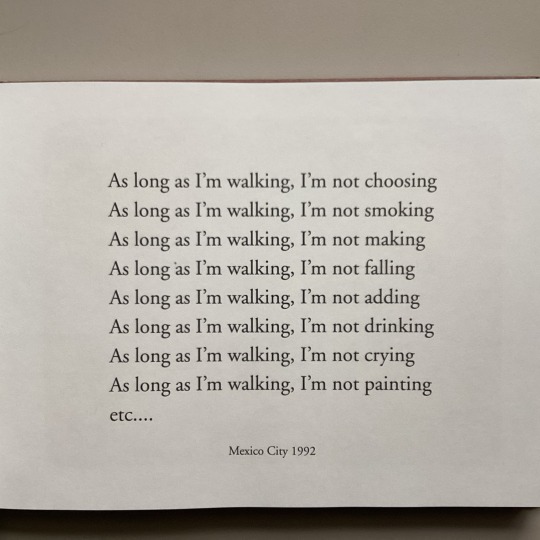


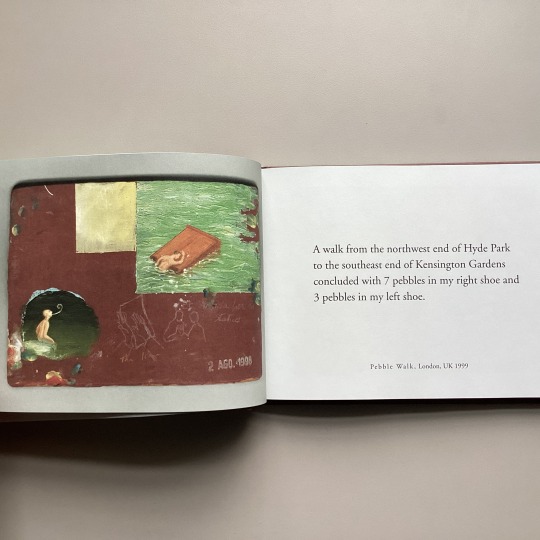
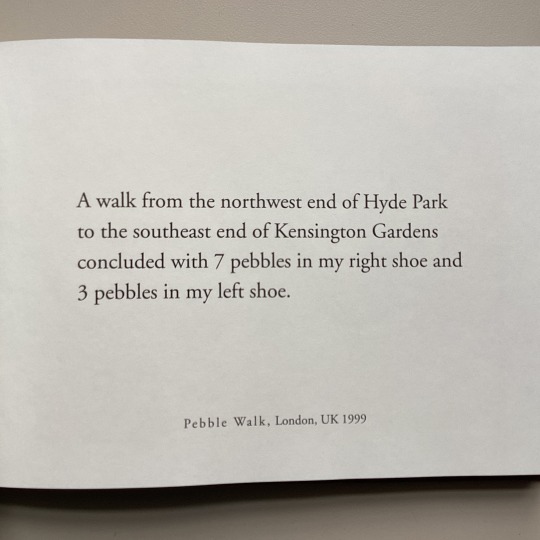

We had fun brainstorming for National Walking Day post yesterday, so here’s another one about walking. But we’re seeing some snow showers today here in Cambridge. Not a good day for walking. We can’t wait for the spring to arrive!
Francis Alÿs (b. 1959) is a Belgian-born, Mexico-based artist who creates a diverse body of artwork spanning from performance, social practice, video, and paintings. And walking has been an important element in his work throughout his career.
In 1991, Alÿs dragged a small magnetic toy dog on wheels throughout the streets of Mexico City to collect any metallic residue lying in its path (“The Collector”). In 1995, he took a walk after unravelling the sweater he has on, leaving an ever-lengthening, blue-thread trail in his wake. (“Fairy Tales”).
This small publication is a record of a unique series that has been described as a storyboard or archive of Alÿs’ oeuvre, polyptych of 111 paintings called le temps du sommeil. The intriguing images are paired with the words, or instructions, behind his past and future performances.
Le temps du sommeil
Francis Alÿs ; catalogue editor, Catherine Lampert.
Dublin : Irish Museum of Modern Art ; Milano : Charta, [2010]
English
HOLLIS number: 990123544680203941
#FrancisAlys#FrancisAlÿs#Walking#WalkingAsArt#HarvardFineArtsLibrary#Fineartslibrary#Harvard#HarvardLibrary
15 notes
·
View notes
Text
The Blanched Soldier
Originally published in 1926; the Americans actually got this one first by a month.
I have covered the Boer War extensively in a previous post, but will add some notes on items directly relevant to this story.
The Imperial Yeomanry were a volunteer i.e. not career military force of mounted infantry formed in 1900 as reinforcements in the Boer War. They were disbanded in 1908 and merged into the Territorial Force, a precursor of what is now called the Army Reserve.
Mounted infantry were infantry that travelled on horseback and fount dismounted. They continued in use into the Cold War, with some units also being "mounted" on bicycles on both sides of the Second World War, before being replaced with mechanised infantry.
Middlesex was the traditional county that covered much of the North and West of what is now Greater London; losing a large chunk of its territory and population to the London County Council in 1889. It was abolished in 1965, but remains very much a thing for sporting and cultural purposes, with its own county cricket team being just one example.
A martinet is a strict disciplinarian, the name coming for a type of short whip. Arnold RImmer from Red Dwarf is sometimes described as such, although the character is clearly meant to be quite pathetic.
The Victoria Cross is the highest British award for gallantry, equivalent to the Medal of Honor and like that medal, frequently awarded posthumously. It also usually requires multiple witnesses to the gallantry in question. It trumps absolutely everything bar the George Cross in the honours system, and it is traditional for a private with a VC to be saluted by a general officer.
The most recent VC was awarded to Joshua Leakey in 2015 for his involvement in a firefight with the Taliban in Afghanistan in 2013, where he took control of a machine gun left on a hill and kept firing even as bullets ricocheted off the weapon.
An elephant gun is a large calibre rifle intended for use against elephants and large animals. They saw some military use in the World Wars by the British against armoured German snipers in the trenches of the First and by the Italians against British armoured cars in North Africa during the Second. Since ivory hunting became taboo, they are much less common.
Bedford is a market town in England and county town of Bedfordshire. It has two stations, the main one being located on the Midland Main Line running into St Pancras. Served by Thameslink, East Midlands Railway and London Northwestern Railway services, the last on the Marston Vale line to Bletchley, it is on the outer edge of the London commuter belt.
The other station at Bedford St. John's is served by LNWR services on the Marston Vale line to Bletchley, which is part of the former Varsity Line from Oxford to Cambridge. The station was resited in 1984.
The Sultan of Turkey - and the whole Ottoman Empire - in 1903 was Abdul Hamid II, a modernising absolute ruler who faced many assassination attempts and was ousted in a coup in 1909, replaced by his half-brother Mehmed V.
The Spectator is a British political magazine that has run since 1828. Being distinctly conservative in its world view, its former editors include one Boris Johnson.
"Squadron" was the traditional term for company or battalion sized cavalry or mounted infantry units. Outside of naval and air force use, it is now used for armoured units, which are frequently old cavalry units that just changed their level of horsepower.
Stoep is an Afrikaans word for "stoop".
Leprosy is transmittable by close contact, but you generally need a lot of it. It is still common in Brazil, much of Africa and India, but is now curable. Prejudice remains a big problem, with "leper colonies" still being common.
The general scholarly consensus is that it wasn't ichthoysis, of which there are many types. The NHS has more information here (with pictures): https://www.nhs.uk/conditions/ichthyosis/
21 notes
·
View notes
Note
Hello Dr. Reames! When you decide to read a history book on your free time - and a book completely unrelated to your area of expertise - but you know nothing about said topic, you're only interested in learning about it. How do you choose which book you'll read?
FANTASTIC question. Thank you for asking it.
Let’s Talk How to Evaluate the Quality of a Book NOT on/in Your Specialization or Field
I’m going to start with some general bullet points of advice with discussion. Then I’ll give a concrete example of a book (or set of them) that I decided not to buy after a little rummaging.
The Basics
(These may seem obvious, but a lot of folks ignore them, like they skip over reading the introduction. Always read the book’s introduction!)
Who’s the author?
Most books have, on the back cover or inside, a note about the author. Also, google the person. Do they have a professional degree or some form of special training/ experience (e.g., say, they worked on a dig)? If they’re a professor, where do they teach? (But don’t put too much on that; the state of academia today means highly respected scholars could end up in Podunk Mississippi just to find a job.)
What type of book is it and who’s the intended audience?
Is it an academic book meant for other specialists? A book intended for use as a textbook? Something marketed to general audiences: “pop” history, or creative non-fiction? These may all be well-done. Yet if I’m wanting to learn about a topic I’m not familiar with, I specifically seek out a textbook, as they're geared to teach the topic to non-specialists. They won’t go down a research rabbit hole. Specifically in ancient history, those “Companion to…” collections are great, as you get multiple experts weighing in on what they know the most about. And they're intended for interested readers but not specialists in that particular topic. Also they’re curated by an editor who IS a specialist, so you know the chosen authors are respected in the field.
When was it written?
If the publication date is 50 years ago, it’s been superseded. It might be out of date even if it’s 20 years ago—or 10. But newer is not necessarily better.
What press published it?
Princeton, Cambridge, Brill/DeGruyter, Berkeley, Peeters, Harvard, Chicago. Any would be a good sign. But the University of Oklahoma does not mean it’s a bad book. (Beth Carney’s important first monograph on Macedonian women came from UOk.) University presses can corner the market on a particular topic: Univ. of Nebraska does a LOT of native history. Also, it may not be a university press at all. Routledge is perfectly respectable, as are Bloomsbury and Penguin. For local histories or something niche, you may get publication by a historical society, not a major press at all. (I picked up a perfectly fine book about ghost stories in the city of Savannah done by the local historical society.) BUT IF IT’S SELF-PUBLISHED, that’s a big ol’ Red Flag.
Going a Little Deeper
Ask somebody you know, who IS a specialist in the field, if they’ve read the book and what they think
Depending on your personal circle, this may not be possible.
Find a review (or three)
I regularly teach my undergrads (and grad students) to look for reviews.
Look at the bibliography
Probably more important for academic books, but how long is the biblio? Yes, topics can have more or fewer publications, but it should go on for some pages. Also, is it all in just one language? Some fields may tend that way (much American history), but a well-done monograph in, say, Greek or Roman history should not be monolingual in the research.
Actually check (don’t ignore) footnotes
They tell stories. Again, this largely pertains to academic books, but you can find fun (and occasionally catty) scholarly quarrels in them. Very early in my reading on Alexander, I became fascinated by the back-and-forth in footnotes between the “Three Bs” (Badian, Borza, and Bosworth) plus Green and Hammond. BUT some red flags: 1) the author disproportionately citing themself, especially if it’s because 2) the author seems to have quarrels with a large number of colleagues. Maybe the author is just original! But sometimes that tells you their conclusions are questionable. Use your common sense.
Now, for a concrete example … as some of you know, I have American indigenous ancestry, specifically Peoria-Miami (Myaamia). While I know some things about our tribe, I’m far from an expert. On our Facebook page, one of the other members recently dropped mention of a series on the early history of Indiana, and the conflicts between settlers and natives during the French-Indian Wars—including St. Clare’s Defeat, effected by the Myaamia and led by Little Turtle (Mihshihkinaahkwa), the worst defeat [proportionally] ever suffered by American troops.
I thought, Oh, cool, maybe I should pick these up and read them in my “copious” spare time. E.g., probably years from now.
I followed the provided link, and immediately thought, This doesn’t look good. Page ran on forever, not well organized, and I had to hunt for info about the author. Although he was a retired schoolteacher, he didn’t seem to have any specific training in doing historical research; I don’t think he was even a history major in college (probably did education). Additionally, the book-covers and purchasing info made it clear all the books were self-published, and the provided text snippets contained grammar errors.
Yeah, I left that page bookless. Maybe the info in them was perfectly fine and he just couldn’t find a publisher who wanted creative non-fiction about an event most people have never heard of led by a chief with a name most can’t pronounce…. But I’m going to bet the research matched the grammar: slap-dash.
Now, that was a relatively easy one to figure out; I spent all of 10 minutes on the page. (And no, I’m not naming the author nor linking to the books, as this is an example, not an attempt to humiliate the person.) But it gives you some idea how I evaluate books in a field very far from my own specialty.
———————
* Although that said, they’re starting to scrape the bottom of the barrel to come up with new topics for Yet Another “Companion to….” Some I’ve seen would be better just sold as a collection on X topic, not “Companion to….”
#asks#how to judge a history book when you're not an expert in that topic#history#reading about history#historiography
7 notes
·
View notes
Text
Vincent Foredale, Earl of Edgewater - The man behind the title



Vincent Rupert Alexander August Foredale is the only son of Dominique Margaret (granddaughter of the Duke of Fydelia and daughter of his second-born son, the Cordonian ambassador to England) and the Earl of Edgewater, Rupert Archibald Foredale. He was named after an ancestor who was known for spying for both sides during the Wars of the Roses.
Despite Rupert's reluctance to break the tradition, due to Dominique's previous complications, he was born at the City of London Maternity Hospital on April 25, 1968. Vincent was the first Foredale baby not to be born on the Edgewater or at the family London Estate. In August of the same year, he was baptised at Moorefield Church. Queen Elizabeth II and his son, the Prince of Wales, were their godparents.
Contradicting the fears of breaking the tradition, Vincent was a healthy and playful baby.

Until the age of five, Vincent spent his days between the nursery and the gardens, playing with his neighbour and best friend, Matthew Sinclaire. Together, the two boys spent countless hours doing all kinds of mischief: scaring the swans of Edgewater Lake (and running away from them), playing with the hunting dogs (something Rupert had prohibited), playing pranks on the employees of both estates or simply eating mud like all the children do (yes, rich children eat mud too).
Determined to make his son a man in his image, Rupert hired a strict tutor who imposed on the boy a rigid study schedule, to which the Earl added even more rules.
Encouraged by his mother, Vincent did his best to meet his father's high expectations. Nevertheless, before his son's achievements, the Earl reacted with indifference or sharp criticism. Feeling that his best was never enough made Vincent grow apart from his father through the years.
For that reason, going to Eton at the age of thirteen was almost a liberation for him. Although the young viscount often chose books and chess, Vincent, along with Matthew and other companions, lived the typical young boys' adventures.
One of the things he learned during that time was how to ride a motorcycle. A colleague who lived in the city taught him and the other boys in an open field near the college.
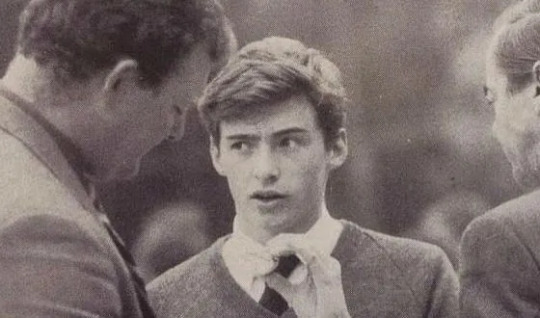
The exception was Miss Campbell (code name among Vincent's friends, 'Miss Candy Eyes'), the young man's first love. The girl worked after school at her parents' candy store in Windsor. Despite Matthew being the first to try to ask her out, the girl preferred to take out the quiet young Vincent. After those rendezvouses at Windsor, Vincent came back to Eton covered in sugar and cheap lipstick.
Still at Eton, Vincent discovered another passion – writing. Writing had become an escape for the teenage Vincent to deal with the turbulence of the adventure of growing up. His first experiences were some cheesy poems dedicated to Miss Campbell and a small Shakespearean-inspired play written for a literature class project. He tried to write a short novel but became too frustrated with its and his imperfections to continue the story.
After finishing his studies at Eton, and again following the old family tradition, he continued his studies at the University of Cambridge. There, he studied History and Political Science.
After a couple of years' break, Vincent ventured again into the universe of writing.
Inspired by the Cambridge atmosphere, Vincent drafted many stories, wrote several poems, and finished his first novel, a romance between an English spy and a French prostitute during the Napoleonic Wars. It had some flaws, but an editor showed interest in the story.
Unsurprisingly, Rupert did not allow the negotiations to move forward because "It was a waste of time, and being a writer was not a dignified occupation for a future Earl, especially a quixotic run-of-the-mill writer like you."
Feeling discouraged, he quit writing for years.
Despite Vincent having graduated with distinction, Rupert did not let him help with the family business or get a steady regular job. And God knows how Vincent tried. He knew his duty and knew he was capable of doing it.
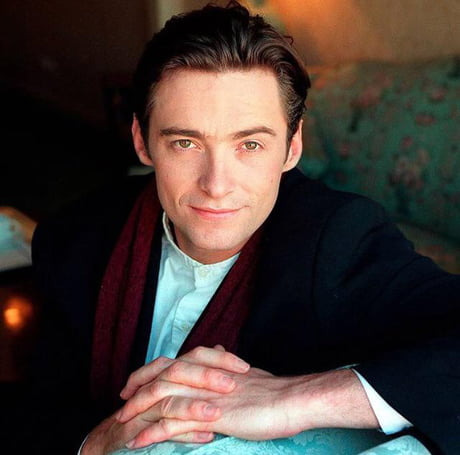
At the same time, his mother was trying to force him on every high-society girl he came across. Dominique insisted that getting married and having children would give him a purpose in life until he became an earl. To make her point, she didn't tire of talking in the case of his best friend, Matthew Sinclaire. The master of Ledford Park, once an epic rake, had fallen in love, and now it was an example of the wonders conjugal happiness brings to a man. In fact, Lydia Sinclaire herself had confirmed she was finally expecting.
He dated some of those women to please his mother, but never felt a connection with any of them. Furthermore, he did not wish to drag anyone into a relationship or marriage of convenience.
Frustrated and somewhat out of spite, Vincent allowed himself to get lost in the bohemian life of London's high society for some time. However, that only made his heart feel emptier. Fearing for his friend's sanity, Matthew helped him find a suitable job at the British Museum that not even Rupert could raise objections to.
In the meantime, Theodore and Matthew joined the countess on the mission to find him a girlfriend. The viscount was exasperated with the matchmakers.
One night, the Sinclaires threw a party at the Trafalgar St. James. As usual, he had spent the night running away from potential suitors and making small talk. Fed up with the fancy party, Vincent was considering leaving when he heard a voice that filled the imposing ballroom. It was the most beautiful thing he had ever witnessed. His heart stopped, but Vincent had never felt so alive.
Bewitched, he didn’t mind exposing himself to shame in front of the hundreds of illustrious guests to get a chance to see her again. Even if nervous, Vincent played and sang with all his heart, hoping to reach her heart. To this day, some of the party guests still remember his surprising performance.
Maybe Mary couldn't be considered extraordinarily beautiful by most people, but there was something unique about her that made him want to look at her for the rest of his life – Would be her bright eyes? Her sweet smile with a mischievous promise on her lips? The unruly waves of her chocolate hair?
If her voice and beauty had amazed him, her soul entranced him. Mary was different from any other woman Vincent had encountered.
Although, in her words, she was "poor, but the queen of herself," Mary had no problems opening her heart, talking about her dreams, the wounds she carried, the flaws she had... Mary was completely genuine in everything she said and did.
That night, he knew he was hopelessly, deeply, and wholeheartedly in love with her. When Mary fell asleep on his chest, Vincent thought he would die of happiness. Kissing her was as natural as breathing. It was the meeting of two souls.
For almost two years, Vincent lived in seventh heaven. He never felt so happy as he was with Mary. Whether it was a weekend away or a Sunday afternoon spent playing card games on the floor of Mary's flat (she was a very good player), all the moments together were sublime, the pinnacle of freedom and happiness. He was finally discovering his true self.
However, there was a shadow between them.
Outside their love bubble, his world was complicated and hard-hearted. He wanted to protect Mary from the weight of his duties, even if it involved some lies and omissions. Mary herself was in no hurry to enter this world. Although the world had changed, she was aware that Vincent would need some time.
Still and all, Vincent proposed to Mary, and she said yes. He still didn't know exactly how or when, but the queen of his heart would also be the queen of everything that was his.
In his dreams, Vincent would have offered her the family engagement ring. However, for now, the discreet diamond would have to be enough to witness their love.
But life tricked the young viscount. Weeks later they got engaged, Vincent found out his father had made some ruinous investments. After years of spending on pomp and pageantry, the family had no funds available. They were at risk of losing their properties and possessions. Matthew was working with him to find a solution, however, the more they dug, the more problems they found.
His heart was torn between his duty and Mary.
When his father proposed a marriage with Henrietta Marlcaster (widow of the fat cat Mr. Marlcaster), Vincent seriously considered eloping with Mary, but after some reflection, he decided to pretend to accept the arrangement to buy some more time.
The plan seemed to work for a while until, on one fateful February Sunday morning, his dreams shattered. The Sunday Times pompously announced to the world that the Viscount Vincent Foredale and the esteemed Lady Henrietta Marlcaster were engaged to be married. He didn't have time to break the news to Mary. She found out while waiting in line to buy bread for their Sunday breakfast.
Seeing Mary devastated because of him was the worst pain he had ever experienced. Even though she refused to see him, and wedding preparations had been hurried, Vincent kept fighting to get out of the engagement.
For the first time in his life, Vincent faced his father. Mary was worth a war with a battalion of enraged Rupert's.
Obviously, for his parents, giving up on the marriage with Henrietta was off the table. They needed her money to stay afloat. Besides, it would be a scandal.
The young viscount threatened them that he would give up everything to marry Mary. Rupert laughed disdainfully in his face.
“If she was, rich or had a title, maybe something could be done. But a singer coming from nowhere... that would be the final nail in our coffin.” Dominique appealed to her son.
After this argument, Vincent left home for a few weeks.
He looked for Mary everywhere. It seemed as if she had simply vanished into thin air. Vincent was desperate.
As the weeks passed, the creditors increased the pressure. His mother has started selling things. Every time he came home, something was missing. One day, on one of the rare occasions he was at Edgewater during that period, Vincent found his mother talking to an auctioneer. He was appraising the bust of Venus, a piece he knew that meant a lot to her. It was part of her dowry and one of her last connections to her homeland.
Seeing the sadness in her mother’s eyes made him feel guilty and selfish. Their family legacy was dying piece by piece.
"We mean more than ourselves. We are our legacy." Vincent had grown up under that mantra. That idea haunted his thoughts day and night.
During those troubled days, Vincent made the most difficult decision of his life. Since he had failed in love, he was determined not to fail in his duty. Even if that duty was making him deny his heart and principles.
So, on the 2nd of May 1994, he married Henrietta Marlcaster at Moorefield Church, in a sumptuous ceremony paid for by the bride.
As agreed, after the wedding, the new viscountess paid off half of the family's debts. The other half would only be paid when she had a child in her arms, her security for the rest of her life.
Pressured by the urgency of the situation, Vincent tried his best. His herculean effort paid off and shortly after, Henrietta got pregnant, and Harry was born on March 30 of 1995.
The duty was fulfilled: the debts were paid, Edgewater was rising from the ashes, and there was a new heir.
Satisfied that everything went as he had planned, Rupert changed his attitude towards Vincent, treating him like a "prodigal son." Unfortunately, the late redemption was not enough to heal their relationship. Vincent could not forget or forgive what had happened in his childhood, nor forced marriage, much less Mary's disappearance. Although he had no proof, Vincent had always suspected that it had been his father's work.
When Rupert Foredale died at the turn of the millennium, Vincent did not cry for his father's death.
He worked hard, but within a few years, Vincent had returned every penny to his wife.
Though, that didn't heal his heart. To ease his pain, he focused on his new family. Although the marriage started out as a nightmare, Vincent built a (most of the days) cordial relationship with his wife, maintaining a peaceful coexistence.
On the other hand, Edmund (Henrietta's son from her first marriage) and Harry were the centre of his world. Initially, Edmund did not react well to either the marriage or his brother's birth. After almost a year of attempts to get closer to the boy and a lot of tantrums, Edmund let Vincent into his life. The Earl was determined to learn from his father's mistakes and give his children the love and support he never felt.
At the same time, the new Earl resurrected the family's patronising and charitable spirit. The region's inhabitants noticed the difference in attitude between father and son. Vincent was approachable and kind-hearted, therefore, everyone felt free to come to him.
In all those years, there wasn't a single day that Vincent didn't think about Mary. He had never stopped loving her. He wondered where she was, if she had got married, if she had children, if she had moved to the USA... Every day he missed her more and regretted letting her go. Sometimes, he thought to look for her, but the more time passed, the more ashamed he felt about his actions. The last thing he wanted was to hurt her again with his ghost.
On an unusually sunny morning in December 2004, life had the biggest surprises in store for him.
When the friendly Mrs. Daly told him she was a friend of Mary's, Vincent almost fell out of his chair. It filled his heart with hope, just to be broken by the fatal news: Mary was dead. Vincent felt the cold taking over his body. For a few seconds, he couldn’t breathe. The pain in his heart spread throughout his body. Vincent thought he was going to die right then and there.
While he was still lost in the wave of pain and despair, Mrs. Daly revealed another plot twist: Mary had a child. He had a daughter. Their daughter. If only he had known that Mary was pregnant... How would their daughter be like? Would she be happy to meet him? There was a whirlwind of emotions in his heart. Vincent had never felt so sad and so happy in his life.
When Mrs. Daly told him the girl's name was Beatrice, his heart skipped a beat. Several times during their long pillow talks, they had talked that if they had a daughter, it would be Beatrice, "like the Dante's muse."
He was amazed. Vincent felt his heart melting in love as he saw the pictures of Beatrice. Tears fell uncontrollably down his cheeks, despite the wide smile on his face.
She was his second chance to love Mary, and he wouldn’t let his love down again.
Since day one, Beatrice was the light of his life, not only because of the love she represented but also because of the girl she was and became through the years. Father and daughter had a strong bond, which sometimes caused some misunderstandings between the children.
After Beatrice came into his life, Vincent felt like he was reborn. If life had given him that second chance, maybe it was time to pursue other dreams. Mainly encouraged by his daughter, Vincent came back to writing, and his "run-of-the-mill writing" won over the English and success beyond borders, as Mary had always predicted.
Matthew's death threatened to tear him apart. A part of himself had also been reduced to ashes in that fire, but now Vincent had a new responsibility - taking care of the legacy of his best friend and of his most precious treasure - Ernest. And Vincent did it with all of his heart.
Unfortunately, he continued to be haunted by the shadows for the rest of his days.
This is Vincent Foredale. A man who suffered as much as he loved. A man who fought for his dreams, silencing the mockers. A man who rebuilt his home from the ashes. A man who sacrificed himself for those he loved. A man who genuinely sought to help the disadvantaged. A man who never allowed the bitterness of life to harden his heart.


@jeanele ❣ @missameliep ❣ @regencylady1810 ❣ @i-put-the-sin-in-sinclaire @whenyourheartskipsabeat ❣ @xjustin-ethansgirliex ❣ @noesapphic ❣ @gardeningourmet ❣ @paisleylovergirl ❣ @dailydoseofchoices ❣ @rhyssescups ❣ @storyofmychoices ❣ @a-shining-lucky-star ❣ @lorircreates ❣ @lorirwritesfanfic ❣ @walkerduchess ❣@indiacater ❣ @kinkypot ❣ @anotherbeingsworld ❣ @hellooliviaolivia ❣ @pixel-writer19 ❣ @sinclaire-ity ❣ @darknessabovethelite ❣ @brightningstar ❣@ezekielbhandarivalleros ❣ @marlcasters ❣ @bhartigat81 ❣ @lyannacyrill706 ❣ @daddytyrilstarfury ❣ @secretaryunpaid ❣ @allisonreilynn ❣ @fauxleaves ❣ @twinkleallnight ❣ @kingliam2019 ❣ @iloveethanramsey ❣ @surewhyynot ❣ @yvettegolx ❣ @itlivesinpixelberry ❣ @chutchoices ❣ @electroniccreatorwerewolf ❣ @spookycolorpeanut ❣ @peonierose ❣ @quixoticdreamer16 ❣ @lilyoffandoms ❣ @tessa-liam
43 notes
·
View notes
Text
Manuscript Editing Services from Cambridge Editors
Manuscript editing is a crucial step in the process of publishing a book or article. It involves reviewing the manuscript for grammar, style, and clarity, as well as ensuring that the content is accurate and coherent. Our manuscript editing services are fast, efficient, and affordable. We pride ourselves on our attention to detail and our ability to work within tight deadlines. With our help, you can be confident that your manuscript will be polished and ready for submission.
At Cambridge Editors, we understand the importance of having a polished and error-free manuscript, which is why we offer professional manuscript editing services to authors and writers.

#proofread and editing services#cambridge proofreading#proofreading services#proofreader services#Cambridge editors#editing services#line editing#developmental editing#writing editor#proofreading service
0 notes
Text
Trans women are women, the Cambridge Dictionary says
The Cambridge Dictionary makes it absolutely clear that transgender women are women.
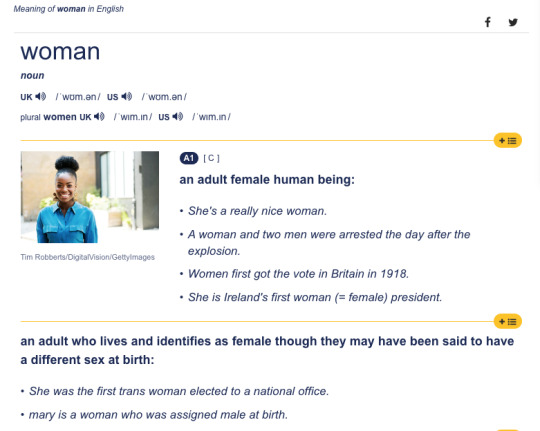
Full dictionary entry here.
Right wing media is already up in arms about the addition of transgender women to the entry. We guess the dictionary editors have made their point.
By the way, Merriam-Webster has a definition of “female” that is transgender inclusive.
88 notes
·
View notes
Text
THIS DAY IN GAY HISTORY
based on: The White Crane Institute's 'Gay Wisdom', Gay Birthdays, Gay For Today, Famous GLBT, glbt-Gay Encylopedia, Today in Gay History, Wikipedia, and more … November 25

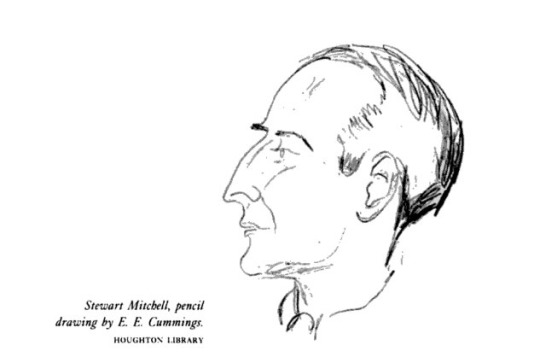
1892 – Stewart Mitchell (d.1957) was an American poet, editor, and professor of English literature. Mitchell’s editorship of The Dial magazine signaled a pivotal shift in content from political articles to aesthetics in art and literature.
Mitchell was born in Cincinnati, Ohio. After graduating from Harvard University in 1916 he taught English literature at the University of Wisconsin. He resigned his position for political reasons, frustrated that he was forced to give a "politician's son who should have been flunked" passing grades. Mitchell enlisted in the army, serving in France until he was discharged as a private two years later.
Mitchell returned to the United States and was hired by Scofield Thayer and James Sibley Watson as managing editor of their joint project, The Dial. Mitchell, in association with Gilbert Seldes, was managing editor from 1919-1920. His appointment as editor marked a shift in the influential, modernist little magazine’s focus on politics to an artistic, literary theme.
Mitchell’s work for The Dial involved not only editing but, as was common with the majority of The Dial's editors, active involvement with and submissions to the creative or literary content.
Mitchell’s associating with The Dial proved advantageous and profitable to his own literary career. He completed and sold a volume of poetry that was published in 1921. Several of the poems in his collection were first printed in The Dial. These were reprinted with permission from Scofield Thayer. Following Mitchell’s resignation as editor, he continued to submit book reviews as well as poetry.
His desire to travel led Mitchell to give up editorship of The Dial and pursue further education abroad. In 1922, following two years’ study at the University of Montpellier and Jesus College, Cambridge, he returned to the States and lived with his elderly aunt in New York. Mitchell privately studied foreign language and literature, focusing on French and Greek, before returning to Harvard and graduating with a Ph.D. in Literature in 1933.
While completing his degree he also worked as editor for the New England Quarterly in 1928. The following year he gave up his position to become editor for the Massachusetts Historical Society. It was as a historical editor that Mitchell, according to his associates, truly excelled. His "naturally keen memory and sharp eye, coupled with a sure ear for words and an occasionally brilliant wit, permitted him to excel." After eleven years' service he resigned but was recalled in 1947 as Director and editor.
Mitchell's long-time partner was Richard David Cowan (1909-1939), a student of Cornell University in the 1920s who met Mitchell in the 1930s and they lived together since then. When Mitchell died in Brookline, Massachusetts in 1957, he was buried alongside Richard Cowan, who had died before him.
While at Harvard in his youth, he befriended the poet e.e. cummings who drew the the above sketch of Mitchell.


1913 – Robert Friend (d.1998) was an American-born poet and translator. After moving to Israel, he became a professor of English literature at the Hebrew University of Jerusalem.
Friend was born in 1913 in Brooklyn, New York, to a family of Russian Jewish immigrants. He was the eldest of five children. After studying at Brooklyn College, Harvard and Cambridge, he taught English literature and writing in the U.S., Puerto Rico, Panama, France, England, and Germany. He settled in Israel in 1950, where he lived the rest of his life. He taught English and American Literature at the Hebrew University of Jerusalem for over thirty years. He was well known in Israel as an English-language poet and a translator of Hebrew poetry.
Robert Friend was gay, and his sexuality found expression in his poetry well before the Stonewall era. According to Edward Field in the Greenwood Encyclopedia of American Poetry, Shadow on the Sun is "remarkable in that, for its time, it contains so many poems about the author's homosexuality." Friend's openness continued throughout his writing career.


1942 – Rosa von Praunheim is a German film director, author, painter and gay rights activist. Openly gay, he is one of the initiators of the gay rights movement in Germany.
A prolific director, he has made over fifty feature films. He began his career associated to the New German Cinema as a senior member of the Berlin school of underground filmmaking.
Born Holger Mitschwitzki, he spent his early years in East Berlin. In 1953, he escaped from East Germany with his family to West Germany. In the 60s, he took the artistic female name Rosa Von Praunheim to remind people of the pink triangle that homosexuals had to wear in Nazi concentration camps.
A pioneer of Queer Cinema, von Praunheim has been an activist in the gay rights movement. He was an early advocate of AIDS awareness and safer sex, but has been a controversial figure even within the gay community. His films center on gay related themes and strong female characters. His works are characterized by excess and employ a campy style. His films have featured such personalities as Jayne County, Vaginal Davis, Divine, and Jeff Stryker.
Praunheim's first big feature film was produced in 1970: Die Bettwurst(The Bolsters), a parody of bourgeois marriage. It became a cult movie, which had a sequel in 1973 (Berliner Bettwurst). In the same year, he also caused a stir with his documentary It Is Not the Homosexual Who Is Perverse, But the Society in Which He Lives which led to several gay rights groups being founded.Praunheim has centered his directorial efforts in documentaries featuring gay related themes. In the early 1970s he lived for some time in the United States where he made a series of documentaries about post- Stonewall American gay scene. In Army of Lovers or Revolt of the Perverts (1972-1976) he took on the American gay and lesbian movement from the 1950's to 1976.
Back in Berlin he made feature films such as Red Love (1980), Our Corpses Are Still Alive (1981), and City of Lost Souls (1983). These films were shown in film festivals worldwide.
With the irruption of the AIDS epidemic, Praunheim worked in a tetralogy of AIDS themed documentaries. A Virus Knows No Morals (1985), was one of the first feature films about AIDS. The documentaries Positive and Silence = Death, both shot in 1989 deal with aspects of AIDS activism in New York. Fire Under Your Ass (1990) focuses about AIDS in Berlin.
In Germany Rosa was very vocal in his efforts to educate people about the danger of AIDS and the necessity of practicing Safer Sex. These efforts alienated many gays who came to consider him a moralistic panic-monger. He would remain a highly controversial figure in his native country. On 10 December 1991 Praunheim created a scandal in Germany when he outed, among others, the anchorman Alfred Biolek, the comedian Hape Kerkeling and wrongly the actor Götz George in the TV show Explosiv - Der heiße Stuhl as gay. After the show several celebrities had their coming out. In 1999 he made Geisendörfer Medienpreis for Wunderbares Wrodow, a documentary about the people in and around a German village and its castle.
He lives in Berlin with his companion and assistant Oliver Sechting.


1955 – Bruno Tonioli is an Italian-born British choreographer and TV personality who appears as a judge on the television dance competition Strictly Come Dancing for BBC TV in the UK, and its American adaptation Dancing with the Stars on ABC TV in the US, Tonioli co-created and appeared on the BBC talent show DanceX and its short-lived American adaptation, Dance War: Bruno vs. Carrie Ann.
Born in Italy, Tonioli is fluent in Italian, English, Portuguese, Spanish, and French.Tonioli is openly homosexual, and has spoken of the homophobic bullying he suffered in his youth.
In the early 1970s, Tonioli was a member of the Paris-based company La Grande Eugène and later joined the Lindsay Kemp Company. He worked extensively as a freelance dancer, including an appearance in Elton John's "I'm Still Standing" video.
Tonioli has worked in the music business as a choreographer for music videos, stage shows, and tours for artists such as Tina Turner, Sting, Elton John, The Rolling Stones, Freddie Mercury, Sinitta, Boy George, and Duran Duran. His close association with Bananarama produced many videos, from "Venus" to "Movin' On". Tonioli choreographed the band Arcadia's music video for their song "Election Day" as documented in a 1980s documentary entitled The Making of Election Day.Tonioli's motion picture credits include Ella Enchanted, The Gathering Storm, Little Voice, Dancin' thru the Dark, Enigma, The Parole Officer, and What a Girl Wants. His television film credits include Miss Marple The Body in the Library, Blonde Bombshell, Scarlet Pimpernel and The Bare Necessities. Theatre credits include La Vie Parisienne, Godspell, Steve Coogan's show The Man Who Thinks He's It, and "Forbidden Passion" (BBC TV trilogy in 1985, entitled Oscar in the UK) playing manservant to Oscar Wilde (Michael Gambon).

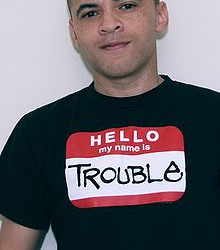
1968 – Craig Seymour is an American writer, photographer, celebrity interviewer, music critic and former stripper. He was born in Washington, D.C.. He has written for The Washington Post, Entertainment Weekly, Vibe, and Spin, among other publications, and has served as pop music critic for The Buffalo News and the The Atlanta Journal-Constitution. Heis now Associate Professor of Journalism at Northern Illinois University. He lives in Chicago.
He has interviewed and profiled some of the biggest names in music, including Janet Jackson, Mariah Carey, and Luther Vandross, who granted him numerous interviews. Seymour has also been a music analyst for CNN's Headline News.
As a graduate student at the University of Maryland in the 1990s, Seymour started frequenting and working in the strip clubs in Washington D.C. while writing his master's thesis: "Desire and Dollar Bills: An Ethnography of a Gay Male Striptease Club." He used these experiences to write the book All I Could Bare: My Life in the Strip Clubs of Gay Washington, D.C. Seymour stated that stripping gave him the confidence he needed to interview big stars like Mariah Carey.
In an interview with Dallas Voice, Seymour credited his stripping career with "the ease I had asking celebrities extremely personal questions, especially those having to do with sex and relationships. After all, when someone is playing with your dick in public, it's not only potentially awkward for you, the one being played with, it can also be weird for the person doing the playing, because he is exposing his desires so nakedly in front of other people."


1970 – Yukio Mishima (b.1925), homosexual Japanese author, commits seppuku (ritual suicide).

1997 – Ecuador legalizes same-sex sexual activity, overturning the previous Article 516 of the Penal Code that criminalized such acts.


11 notes
·
View notes